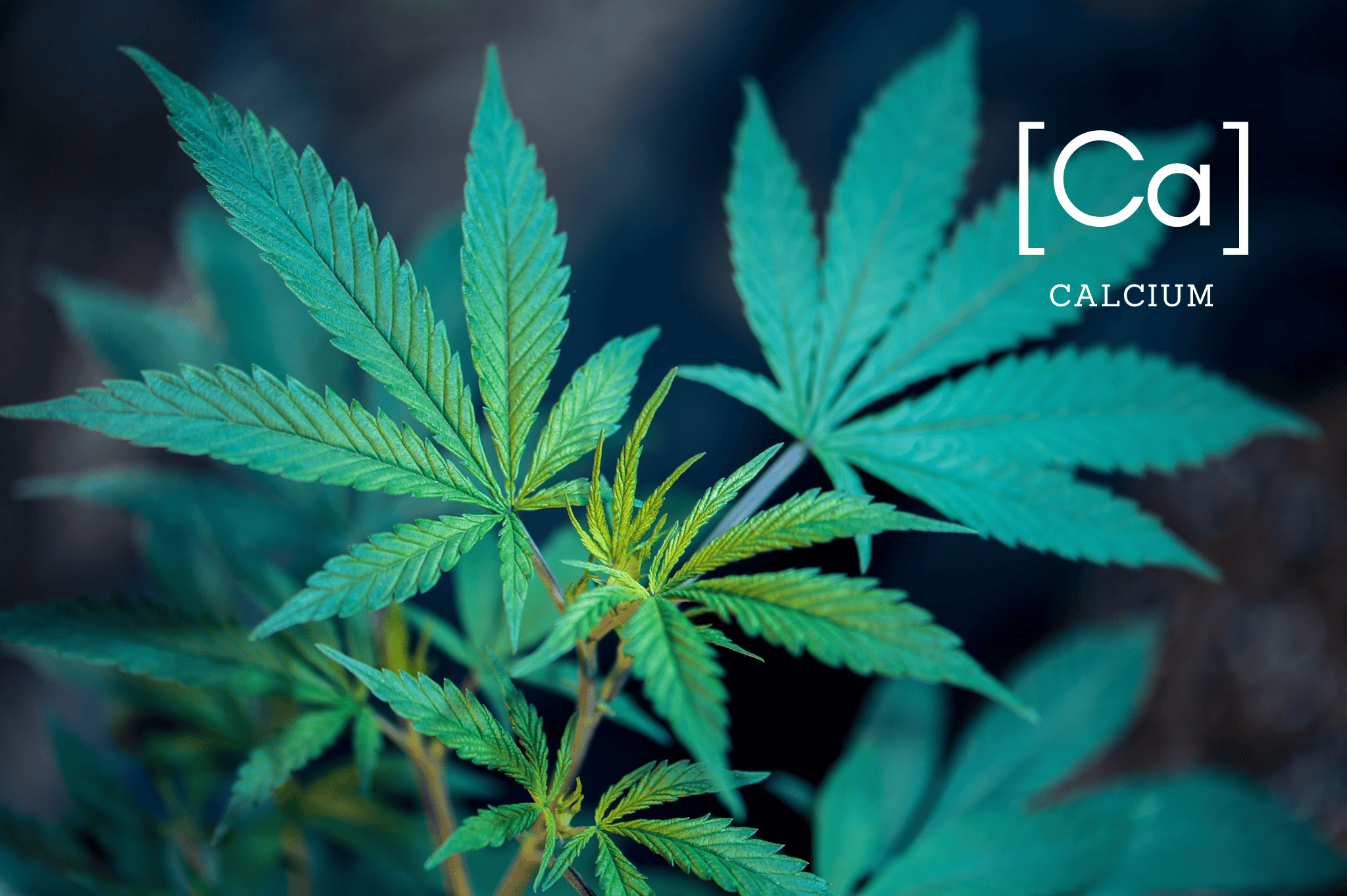The healthy growth of your cannabis plant depends on calcium. It helps with photosynthesis, cell structure preservation, and the absorption of other nutrients. Therefore, a shortage or absence of the element affects how plants develop. Here, we provide suggestions for spotting the outward indications of these changes as well as advice on how to fix them.
It is crucial to pay attention to the symptoms that your cannabis plants display in order to identify what is not functioning, just like when treating an illness in humans. Your youngest plants may be sending you a crucial signal if you have noticed tiny brown or yellowish spots on the surface of their leaves or if they are curving or taking odd shapes: they lack calcium.
Is Calcium Good for your Plants?
The symptoms initially show up on the buds and leaf margins before gradually spreading. Although any strain might experience a deficit, some are more sensitive, and certain plants of the same variety can absorb more calcium than others, keep in mind that your entire harvest won’t necessarily be impacted.
The effects on the outside are merely a mirror of internal processes because this chemical, which belongs to the class of secondary macronutrients, is crucial for the growth of your plants. The fact that they are referred to as “secondary” does not imply that they are less crucial to plant growth than those referred to as “primary,” so don’t be misled by that adjective (like nitrogen, phosphorus and potassium).
Through their roots, plants take in calcium, which their xylem later transports to all of their cells (the conduits that distribute the nourishment recently received by leaves and stems). Because of how closely iron and magnesium are related to calcium in terms of absorption, a calcium deficit is frequently accompanied by an iron and magnesium shortfall. A plant won’t be able to get the potassium it requires from the soil if it doesn’t have enough calcium.
Is there a thing such as too much Calcium?
Additionally unhealthy is too much calcium, which can poison plants and prevent them from absorbing other minerals. Further, when the concentration is too high, the exchange of gases—which occurs through specialised cells in the leaves—is inhibited, which also triggers the development of chlorosis—the browning of burned areas—on the leaves.
What purpose does calcium serve in your marijuana plants? Its presence in their roots is essential to develop the proper density and length. After it enters the cells, they use it for various processes, including photosynthesis, which is how they convert water and light into energy needed to survive.
So, what’s the verdict? Do marijuana plants need calcium?
Of course, calcium also promotes the segregation of the enzymes that shield your cannabis plants from sudden temperature fluctuations and controls the activity of the plant hormones necessary for the plant’s germination and growth (known as thermal stress).
Calcium gives cannabis plants a defence mechanism against illness. The element helps to activate the defence systems required to stop harm from bacteria, viruses, and other pathogens that break down cellular barriers.
The question of when calcium insufficiency manifests is crucial. Unless they grow in low-pH (acidic) soil, like that of a pine forest, outdoor crops are more likely to experience this shortage. A pH that is too acidic hinders plants from absorbing all the calcium they require, which is frequently where the issue resides. Therefore, you must check the pH of your organic soil and ensure that it is between 6.2 and 7.
On the other hand, hydroponic plants are more sensitive to pH changes and nutrient shortages. In this instance, pH levels between 6.2 and 6.5 are ideal for root calcium absorption.
Your choice of water also affects the outcome. When using osmotic water (which lacks nutrients) instead of tap water because it occasionally has insufficient calcium levels, you will need to add calcium and magnesium before fertilizing. When using distilled water, the same holds true.
Many fertilisers contain calcium as one of their nutrients, but if it is not present in sufficient amounts, it is a good idea to add a calcium and magnesium supplement to your irrigation water. However, you should avoid doing this when your plants are in flower because the fertilizers also contain nitrogen, which could cause them to absorb too much of the element. Another option is to use a fertiliser containing calcium nitrate (while still being cautious) or to purchase one that simply contains calcium, like the one we sell.
You can also apply dolomite that has been dissolved in water to the leaves or hydrated limestone to irrigation water to give the nutrition. Use one of the two treatments up until the symptoms go away (you will observe improvement on the new buds, but damaged leaves do not recover).
Conclusion
It is best if the fertiliser you add contains this nutrient in order to prevent a calcium deficiency and to monitor the pH levels of the water and substrate. In any event, the steps we recommend here will help your plants thrive, growing green and healthy if you discover a lack.

